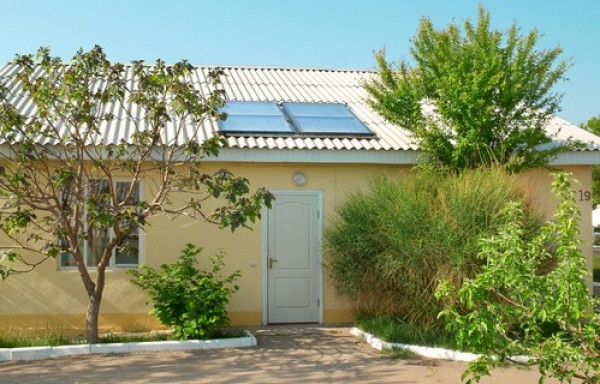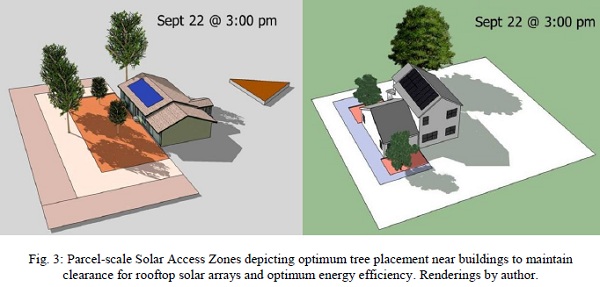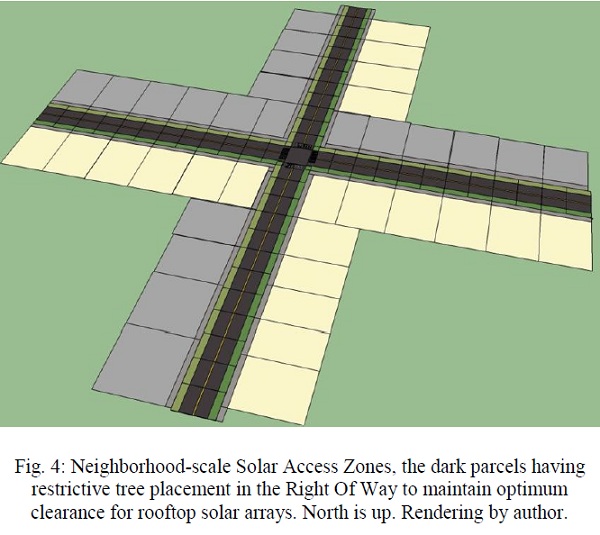The solar vs. trees conflict isn’t new, but it’s popping up more and more as solar gains in urban and suburban popularity. Typically, it manifests as a fight. Sometimes it even becomes a legal battle. But always at its heart is the question: Does neighbor Joe’s right to a big, beautiful tree on his property trump neighbor Jane’s right to unshaded solar panels on her rooftop?
Dan Staley is proposing to reframe the discussion. In a presentation at the Ecological Society of America’s conference in Portland, Ore., last week — reported first in the Oregonian — the Colorado planner and consultant suggested that trees and solar can thrive together in cities, if we accept that both are desired and necessary for our future.

“Must property owners make an all-or-nothing choice: trees or solar power?” Staley asked in the introduction to his session. “The answer in many cases is no – trees and solar panels can coexist so communities can enjoy the benefits of both.”
The root of the issue is the big impact that shade can have on solar power production; a National Renewable Energy Laboratory study reported: “Partial shading of PV installations has a disproportionate impact on power production. For a single-string grid-tied PV system, a shadow can represent a reduction in power over 30 times its physical size.”
Researchers are working on technological fixes that can help reduce this impact — the NREL, using a new shade simulation test protocol, recently reported that “under heavy shading conditions the use of microinverters instead of typical string inverters can help mitigate the impacts of shade by improving system performance by more than 12 percent.”
Still, the best-case scenario is to have solar panels soaking up sunshine unencumbered. Staley gets this. But what’s striking about his written presentation is that while it advocates for solar, he begins and ends by outlining the virtues of trees – the economic virtue of cooling shade; the social virtue of enhanced quality of life; and as for the ecological virtue, well, on that count, any schoolchild can explain why trees are good.
Staley thus highlights a truth that gets lost in the occasional solar vs. tree battles that flare up: tree people and solar people are on the same side.
“The key here is that the solar industry likes trees as well, and a major reason they are in the profession is because they also want to preserve the environment,” Staley writes. “They are very amenable to solutions and will work with the homeowner to preserve trees. The issue now is to connect arborists and solar installers to have everyone understand tree growth rates and tree placement.”
Staley’s ideas for helping solar and trees get along come at the parcel and neighborhood scale.
He proposes “solar safe zones” on parcels, which would restrict “height on plant material to under 15 feet in a defined area (based on parcel and building orientation).” This doesn’t mean a property couldn’t have large trees, as well. As he writes in his paper, “Trees and Solar Power: Coexisiting in an Urban Forest Near You”: “a large tree to the west of a structure … has a smaller chance of shading a PV array on the average residential roof between 9 a.m. and 3 p.m.”

For neighborhoods, Staley proposes finely targeted restrictions. For instance: “based on the street direction, height of trees in the Right-Of-Way (ROW) is restricted on the north side of E-W running streets to a height based on the setback distance and dwelling roof height (taller trees in ROW in front of two-story, shorter in front of one-story).”

Ultimately, the idea is for those who are designing the neighborhoods and commercial developments of the future to become mindful of an important new element to factor into the equation: Rooftops are more than just protection from the elements, they are potential power plants.
“The arboriculture industry is poised to partner with the solar industry to generate clean energy by contributing expertise when recommending best practices for policy and maintenance,” Staley writes. “The benefits of strategically increasing tree canopy in built environments – increased energy savings from shade, increased solar power generation, reduced stormwater peak flows, increased aesthetics and improved environmental health – far outweigh the costs and pay dividends many times over.”